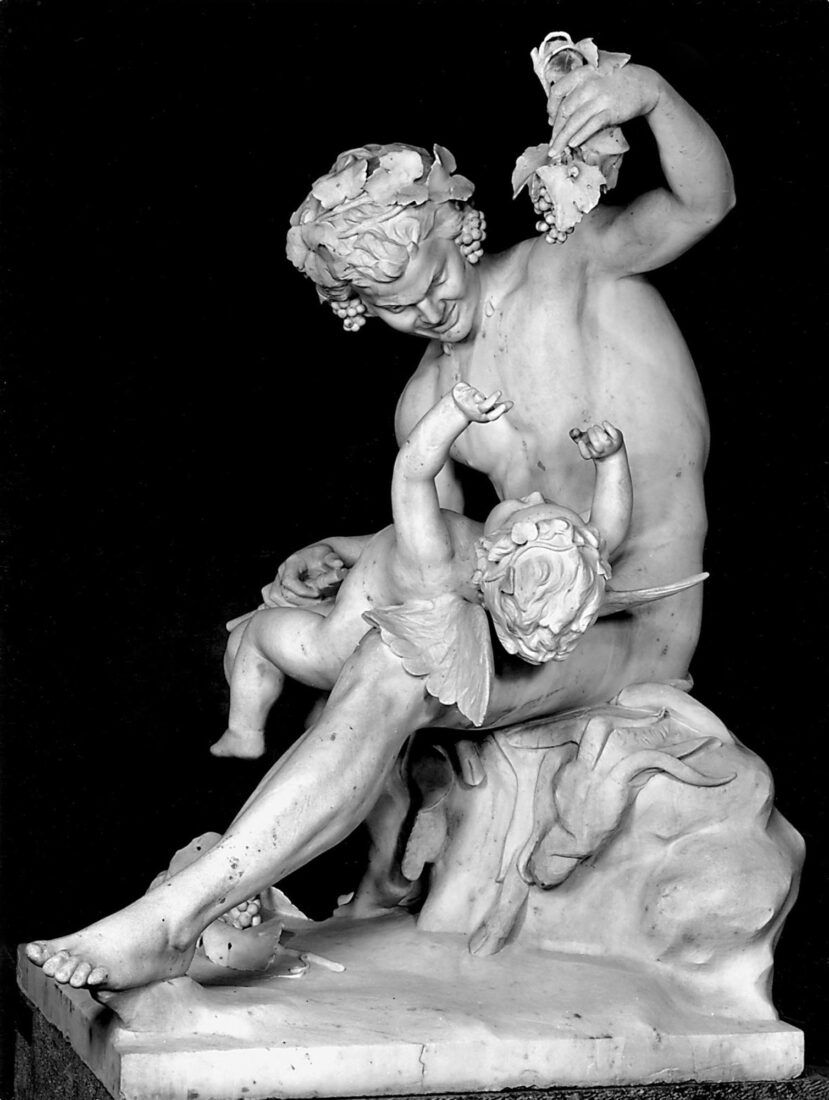We use cookies to make our site work properly, to personalize content and ads, to provide social media features and to analyze our traffic. We also share information about how you use our site with our social media, advertising and analytics partners. Read the Cookies Policy.

Chalepas Yannoulis (1851 - 1938)
Satyr Playing with Eros, 1877
Marble, 135 x 105 x 73 cm
Donated by Angelos Kanellopoulos heirs
Yannoulis Chalepas was an extraordinarily gifted artist. Yet, his life and career as an artist were branded by the outbreak of a mental illness, which led to his institutionalisation at the mental hospital on Corfu and to a 40-year hiatus in his work. The first symptoms of a deviating behaviour became manifest in 1878, at which time the first period of his creative production came to an end.
During that period, Chalepas was thematically inspired by the Greek Antiquity and mythology, in accordance with the neoclassical spirit which prevailed in 19th-century Greek sculpture. “Satyr Playing with Eros” is a characteristic work in this respect. It is, moreover, the first of 12 related works made by the sculptor.
In this first variation, Chalepas created an open, multi-axial composition of vivid motion, reminiscent of Hellenistic art, able to be viewed from multiple points, characteristic of his work in general. Neoclassical elements can be identified in the nudity of the figures, the rendering of the eyes without pupils and irises, as well as in the soft, almost impeccably polished surface of the marble, which enables the light to glide smoothly. The tender body of Eros is projected upon the shadow of the Satyr’s breast. Contrary to many images depicting satyrs as repugnant old men, Chalepas chiselled the figure of an adolescent, whose dual nature is only evoked by a short tail at the base of the spine, the pointed ears and the two small horns, which can barely be seen high on the forehead.
The first effect created by the work is of a joyful scene, full of innocence and insouciance. Yet, upon a closer look, it becomes apparent that the Satyr’s grin is a mocking one, and his expression is cruel and disparaging. It is in vain that little Eros is trying to reach for the grapes.
What is evoked here for the first time is the sculptor’s relationship with his father. Chalepas’s father had been opposed to his son’s artistic vocation right from the start. From 1918 until 1936, Chalepas made 11 more works on the theme of Satyr and Eros in clay or plaster. These works reflect Chalepas’s gradual liberation from the tyrannical figure of the father.

